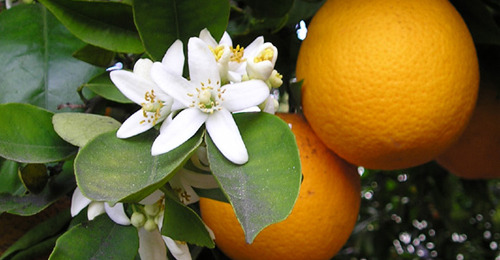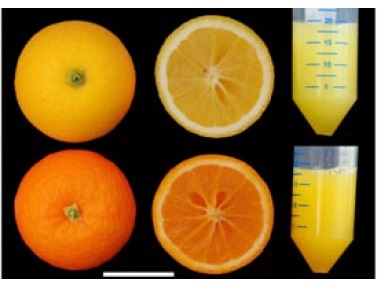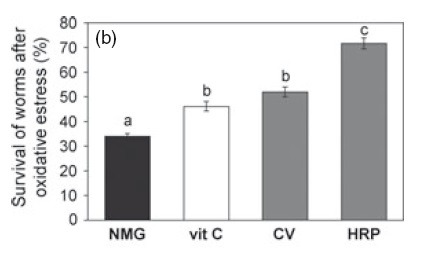
A few months ago, Amy Harmon wrote on the New York Times about a race to save the orange by altering its DNA, thus citrus growers wouldn’t go bankrupt.
Well, I just found out about a genetically modified orange made in Spain. What’s there to know about it?
The result of this research was obtaining bright yellow (“golden”) oranges in less time than usual, and with a higher content (up to 36-fold) in β-carotene in the pulp, a precursor of vitamin A . It doesn’t stop there, and to show that the protective role of the antioxidant carotene was such, Caenorhabditis elegans was used as an experimental model. They have demonstrated in vivo, the antioxidant effect is not only maintained, but it is also 20% higher.
How did they pull it off?
They have transformed sweet orange seeds so the expression of an endogenous gene encoding the β-carotene hydroxylase (Csβ – CHX) is locked. This enzyme is involved in the conversion of β-carotene to xanthophylls. What does this mean? Well, if the passage from A to B is blocked, it accumulates A. And therefore, the β-carotene accumulates. This is responsible for the most intense color because as you know, these molecules give yellow-orange-red color to plants. Simultaneously, it is overexpressed, meaning, it is “forced to produce” a regulatory gene which is crucial in the transition to flowering, the CsFT (Flowering Locus T). The result is that this process is advanced and the fruit is obtained in less time.


Feeding the worm
Working with plants is complicated. They are affected by temperature, light radiation, humidity, photoperiod … and still trying to keep these parameters constant, they grow as they see fit and there are no two experiments coming out the same. However, I guess working with “bugs” must not be easier. Caenorhabditis elegans has been used in many studies as a model to test the in vivo antioxidant activity of pure compounds and some plant extracts but not the fruit or vegetable juice. So the authors of this research were to put to work and put in place the worm in terms of how to give the juice, at what dose, how long … and not without difficulty, by the way.
Once they optimized the method, they proved (visually and by HPLC technique) that worms fed with orange pulp extract (not transgenic) were light orange colored, whereas worms fed with the standard diet (no orange) did not have that color. Allright. This proved biouptake intake and extract pulp by the worm. One step done.

We have an enriched β-carotene-orange, but is it enough to provide antioxidant protection?
Well, let’s see. The worms eat pulp and assimilated. Now it is necessary to give them the pulp of golden oranges that have been obtained. Before giving them the pulp, the content of carotenoids and vitamin C was measured and then added to the standard diet at various concentrations. They all showed a positive effect (especially 2% of pulp) against oxidative stress in the worm. Oxidative stress was induced by adding hydrogen peroxide (yes, hydrogen peroxide) at a 2 mM concentration.
Worms fed control extract pulp had a survival of 52% compared to those who were not fed pulp and obtained a similar result with those fed vitamin C. However, animals fed with golden orange pulp showed a survival rate of 71.67% (20% more than those fed control pulp), demonstrating that worms fed the golden orange pulp were more resistant to oxidative stress (hydrogen peroxide) than those fed with the control pulp oranges.

What if the “antiox” role is not due to β-carotene?
To test whether the antioxidant effect of the golden orange pulp was directly related to β-carotene, they did a test for response to oxidative stress by adding exogenous β-carotene equivalent to the amount of carotene present in the pulp dose. Indeed, it had a higher antioxidant effect.
This breakthrough was made by researchers from IVIA, IATA and Biópolis, so there’s no Monsanto involved.
